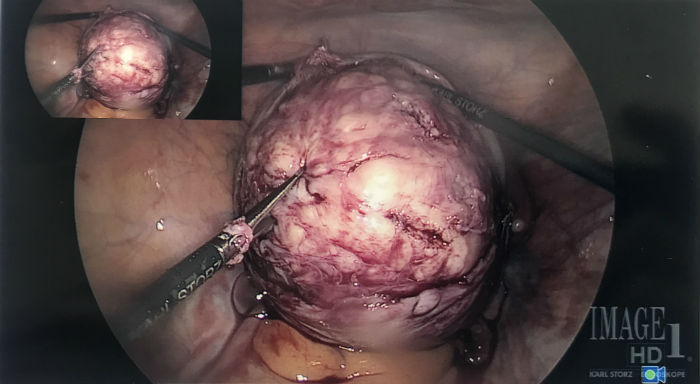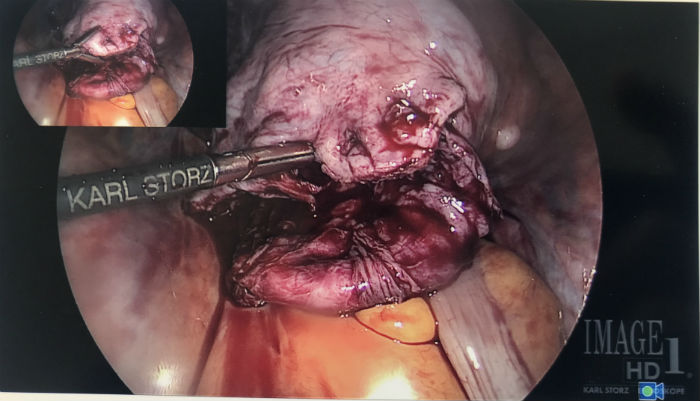Laparoscopic Myomectomy Procedure in Los Angeles
Laparoscopic Myomectomy involves the use of a laparoscope, which is a thin tube fitted with a camera and light to assist in performing fibroid removal surgery. It is a form of minimally invasive surgery that uses small incisions in the abdomen instead of the traditional 6 to 12 cm used for an abdominal myomectomy. It is a highly recommended procedure because of the minimal scarring, faster recovery, and pain.The quantity, size and location of the fibroids being removed can be used to determine whether or not to use laparoscopic myomectomy or other types of myomectomy. Dr Michael Tahery is trained in Advanced Minimally Invasive Surgery and has performed multiple laparoscopic myomectomy procedures in Glendale and Los Angeles.
Am I a good candidate for Laparoscopic Myomectomy?
A Laparoscopic Myomectomy procedure can be used to remove fibroids unless the size, quantity, or location of fibroids is not ideal. Each fibroid removal may require a separate incision in the uterus, hence removing multiple fibroids laparoscopically might be too time consuming. The smaller the fibroid and the more superficially located on the uterus the easier it is to remove. Other types of myomectomy can be used to remove patients with multiple fibroids located deep in the uterus. Fibroids that are on the outside of the uterus are more accessible to removal while those that are deeply embedded or close to important blood vessels are more challenging and may require other types of myomectomy.
How long is the recovery?
Because of small Laparoscopic Myomectomy incisions, most patients are able to go home within a few hours after the surgery. Full recovery is expected in two weeks and the patient can go back to their normal routine. Of course everyone tolerates pain differently and recovery may require more or less time in each individual.
Are there any risks involved?
There are some risks associated with this surgery as with any other kind of surgery. Some risks associated with Laparoscopic Myomectomy include bleeding, infection, conversion of the procedure into an Abdominal Myomectomy, injury to internal organs and weakening of the uterus. Also lack of palpation may mean smaller fibroids may be left behind.
What are the advantages of this procedure?
This procedure is less invasive compared to other myomectomy procedures, hence patients will experience less pain, less bleeding, and quick recovery.
What if I plan to get pregnant in the future?
A Laparoscopic Myomectomy is a recommended procedure for women who wish to have children in the future due to decreased potential for scarring. However some studies show increased risk for uterine rupture in pregnancy subsequent to a laparoscopic myomectomy due to possible weakness in repair of the uterine defect subsequent to removal of a deeply situated fibroid.
Actual Laparoscopic Myomectomy by Dr Tahery





